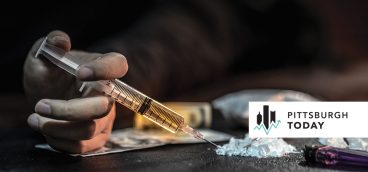Stubborn Addiction Crisis Grows More Worrisome

Southwestern Pennsylvania entered 2020 dealing with a stubborn public health crisis. Drug overdose deaths, despite a briefly encouraging period of decline, were rising again.
Three months later, the COVID-19 pandemic arrived, raising the risk of addiction and relapse, those who work with addicted men and women say.
The pandemic has kindled fear and uncertainty and delivered high unemployment and other worsening circumstances that tend to feed addiction. At the same time, social distancing and increased isolation have complicated treatment and support during recovery that relies on the kind of face-to-face interactions that have been restricted during the pandemic.
“It’s a stressful time,” said Laurie Johnson-Wade, co-founder Lost Dreams Awakening, a New Kensington-based addiction recovery nonprofit. “We may be able to react in a calm manner to the challenges. But for the addicted population, it can be over the top—a level where you can’t handle life around you.”
A clear statistical picture of how the pandemic has impacted trends in addiction and overdose deaths remains elusive. Data on overdose deaths tend to lag, sometimes by several months. A final statewide count for 2020 is not expected until next spring.
But available measures and what nonprofits are seeing among people battling addiction are not encouraging.
Worrisome signs
Slightly fewer people in Allegheny County contacted its substance use hotline during March and April. But calls for help quickly rebounded with the volume rising 20 percent in May through August.
Overdose deaths in southwestern Pennsylvania were rising before the pandemic. Allegheny County reported 564 overdose deaths last year, which was 15 percent more than in 2018.
This year, reported overdose deaths were down 10 percent during the first five months of the pandemic compared to the same period last year. But reporting delays likely mask what county Department of Human Services officials expect to be another increase in fatal drug overdoses when final count for 2020 is complete.
Other indicators also point to ominous outcomes. Non-fatal overdoses appear to be higher than usual, according to data collected by Prevention Point Pittsburgh. The nonprofit, which runs a syringe-exchange program, provides emergency kits with doses of naloxone, which can counteract an opioid overdose. Demand for the kits is a rough measure the nonprofit uses to get an idea of overdose trends.
“People using drugs are the main people using naloxone and saving lives because they are there when somebody overdoses,” said Alice Bell, the nonprofit’s overdose prevention coordinator. “We’ll have concerned parents and service providers who get naloxone kits and a year later bring them back when they’re expired and ask for a new one. At the syringe-exchange sites, we have people who say, I saved two people last week. I need more naloxone.”
The nonprofit distributed 4,886 doses of naloxone last year. It almost reached that mark in the first half of this year, distributing more than 4,200 doses by the end of June. “We were having a lot of people coming in and saying they’re using naloxone. They were seeing lots of overdoses, especially during the initial period of the lockdown,” Bell said.
Frayed connections
Social distancing restrictions and concerns about contracting the virus have strained the delivery of treatment and recovery support for people battling addiction. While virtual strategies, such as telemedicine, have helped maintain connections during the pandemic, they’re not as effective for some people as face-to-face counseling, group therapy and other traditional support.
“We say connection is protection,” Johnson-Wade said. “Mainly, the issue has been, once they leave treatment, where do they go for ongoing recovery? We are seeing a lot of people relapsing. We attribute it to disconnection, not being plugged in. When people aren’t able to be with each other, accountability is less.”
It’s uncertain how long the pandemic will linger to disrupt treatment and recovery efforts. What is clear is that poverty, despair, hopelessness and other underlying conditions that have fueled the addiction crisis for years won’t disappear when the pandemic is finally tamed. “The problems are larger than COVID,” Bell said. “Opioids are a painkiller. You have to question why so many people in our society have the need to kill pain on a daily basis.”



